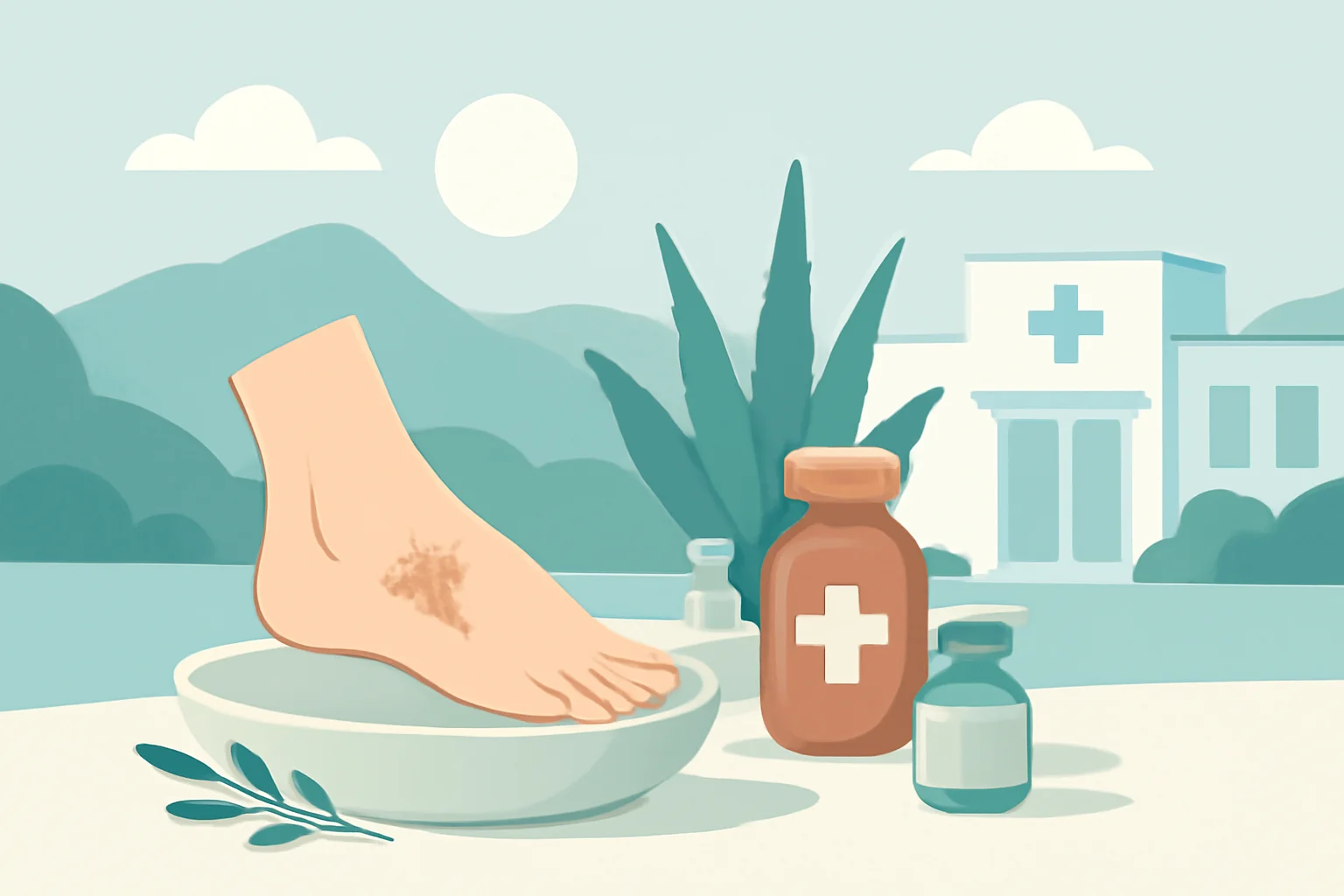
Effective Solutions for Treating Toenail Fungus and Skin Fungal Infections
The athlete’s foot and skin fungus are among the most common fungal infections that affect many people’s lives. These infections spread particularly in warm, moist environments where fungi can thrive easily. Athlete’s foot primarily occurs between the toes and on the soles, while skin fungus can appear on various areas of the body, such as the armpits, between the thighs, or on the scalp. Both conditions can cause significant discomfort, including itching, irritation, and redness.
Risk factors for the spread of fungal infections include hygiene, footwear, skin condition, and the state of the immune system. Proper hygiene practices, such as regularly washing and drying the feet, can significantly reduce the risk of infection. Athletes and those who frequently use public showers or pools may be particularly prone to fungal infections.
Treatment for fungal infections typically involves the use of topical or oral medications, but prevention is also critically important. In this article, we will closely examine the differences between athlete’s foot and skin fungus, the symptoms, treatment options, and prevention methods.
Athlete’s Foot: Symptoms and Causes
Athlete’s foot, also known as tinea pedis, is a fungal infection that appears on the skin of the foot. It most commonly develops between the toes, on the soles, and around the nails. Symptoms include itching, burning sensation, peeling, and redness. The cause of athlete’s foot is usually dermatophytes, which feed on a protein called keratin. The proliferation of fungi is particularly favorable in warm and moist environments, such as during sports activities or in public showers.
Factors contributing to the development of athlete’s foot include poor hygiene, wearing tight shoes, and foot sweating. The fungal infection can easily spread through contact, so if someone touches an infected area of skin, it can easily transfer to them as well. Those with weakened immune systems, such as diabetics or people living with HIV, are also at greater risk.
It is essential to treat athlete’s foot promptly, as untreated infections can lead to more severe conditions, such as nail fungus or bacterial infections. Treatment typically involves the use of antifungal creams or sprays, but in more severe cases, oral medications may be necessary.
Skin Fungus: Symptoms and Differences
Skin fungus, also known as tinea corporis, can occur on various areas of the skin, such as the torso, arms, and legs. Its symptoms are similar to those of athlete’s foot, but in the case of skin fungus, the skin reacts with patchy, red, itchy rashes. Skin fungus often forms circular patches that are clearer in the center, while the edges of the skin may peel.
Factors contributing to the development of skin fungus include sweating, wearing tight clothing, and skin injuries. Skin fungus can easily spread through skin contact, so it is important to pay attention to hygiene, especially if someone shares clothing or bedding with others.
Treatment for skin fungus is similar to that of athlete’s foot, involving the use of antifungal creams, sprays, or oral medications. For prevention, it is recommended to regularly clean and dry the skin and to avoid tight clothing. Additionally, it is crucial to keep the skin free from continuous moisture, as fungi thrive best in such environments.
Prevention Tips: How to Avoid Fungal Infections?
To prevent fungal infections, several simple steps can be taken. First and foremost, proper hygiene is key. Regularly washing the feet and skin thoroughly can help remove dirt that fosters fungal growth. Feet should always be dried thoroughly, especially between the toes, where moisture can easily linger.
Choosing the right footwear is also important. Wearing shoes made from breathable materials can help reduce foot sweating, while tight, closed shoes can increase the risk of fungal infections. When in public places, such as pools and showers, wearing flip-flops is recommended to minimize the risk of infection.
To maintain skin health, proper nutrition and hydration are essential. A diet rich in vitamins and minerals can help strengthen the immune system, making the body better able to resist fungal infections. Regular medical check-ups are also advisable, especially if one is prone to skin fungal diseases.
These simple steps can significantly reduce the risk of fungal infections and contribute to the health of the skin and feet.
Warning: The information in this article is not considered medical advice. Always consult a doctor for health issues and follow their recommendations.

